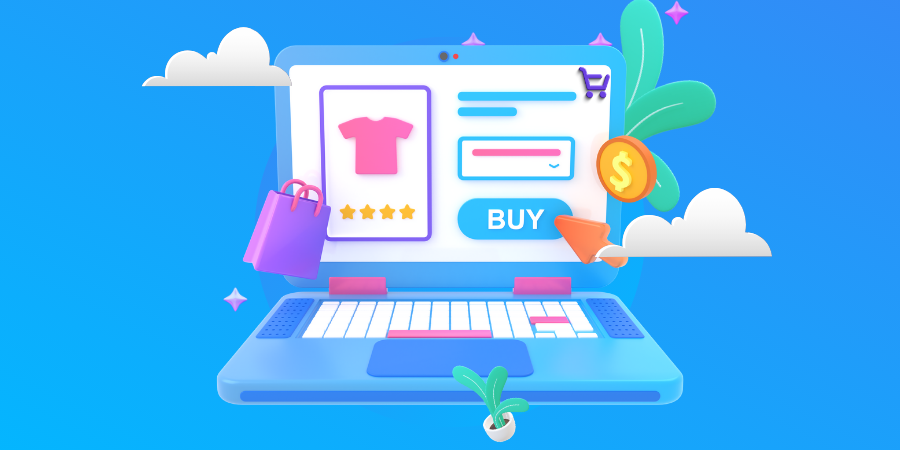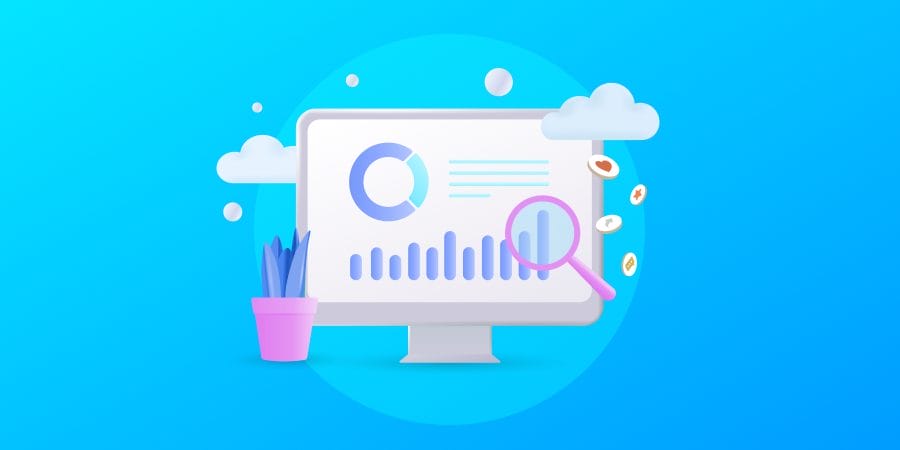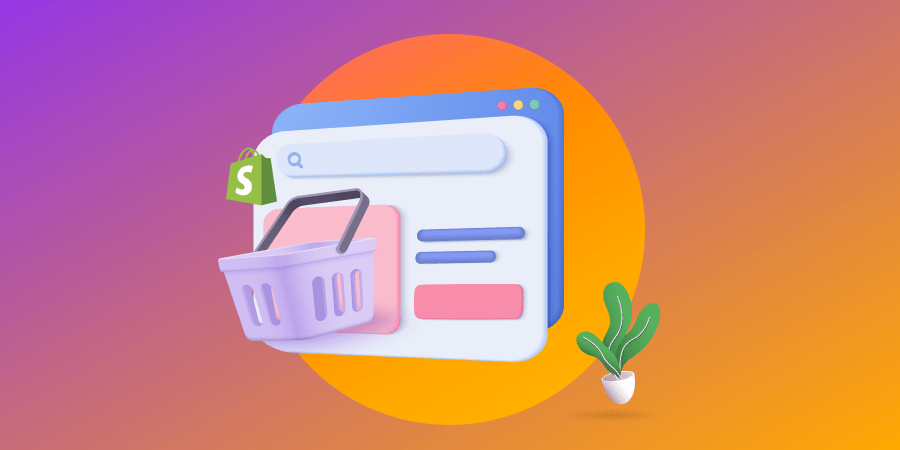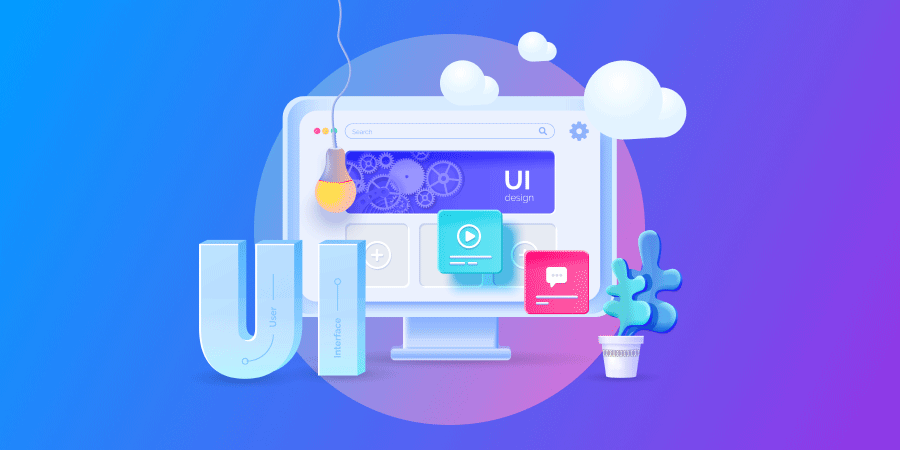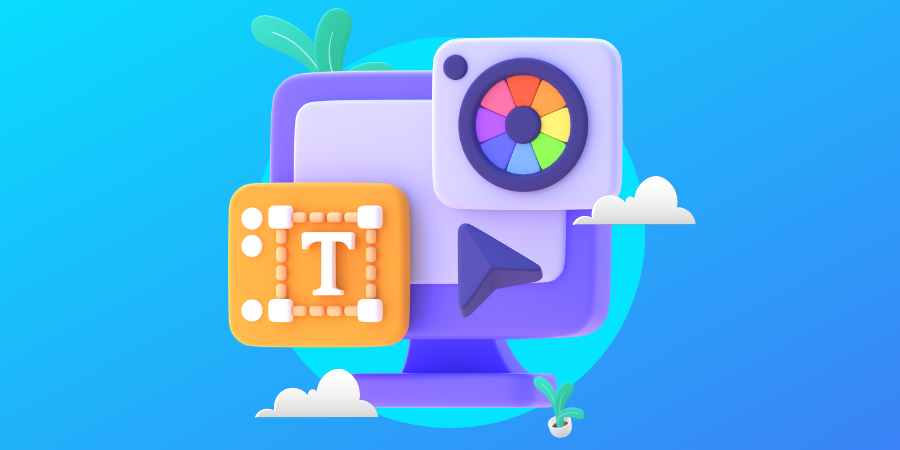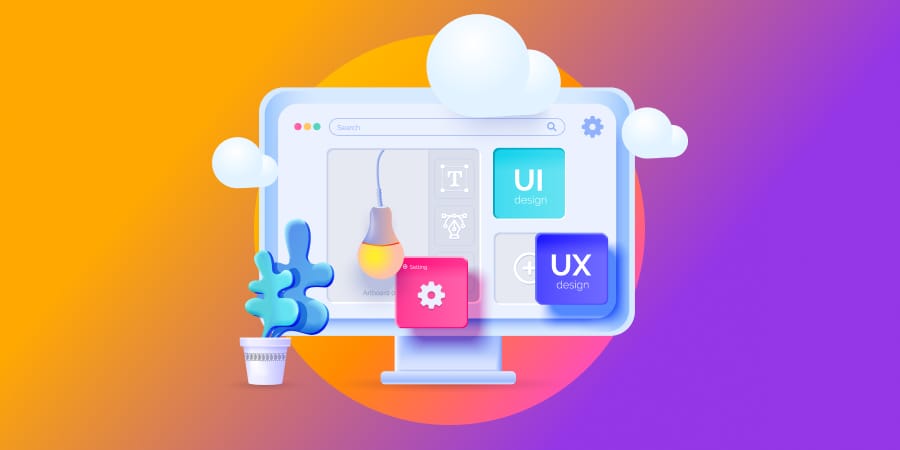According to a recent study conducted by the Baymard Institute, the average cart abandonment rate is an astonishing 70%.
This means that only every third customer will complete their order and convert to a customer.
What drives this many consumers to give up the purchase at the very end of their buyer’s journey?
The answer: poor design.
We’ve rounded up the best checkout page design examples so we can break down what they have in common — the design elements that drive consumers to conversion.
Let’s begin!
[ez-toc]
Digital Silk builds custom e-stores. Request A Quote
The Impact Of Checkout Page Design On Conversion
As the final destination in a shopper’s journey, the checkout page holds the authority to either secure the transaction or leave potential customers unsatisfied and disconnected.
So, what are some of the main reasons customers abandon their buyer’s journey?
Here are the Baymard Institute’s recent findings:
- 48% of consumers abandoned their cart due to too high extra costs, such as shipping, tax and fees.
- 24% of customers changed their minds about completing the purchase because they were asked to create an account in order to finish the checkout process.
- 18% of consumers felt like they couldn’t trust the site with their credit card information, which led to them not completing their orders.
- 17% of customers gave up the purchase because the checkout process was too long or too complicated.
- 16% of customers abandoned their cart because they couldn’t see or calculate the total order cost up-front.
- 13% of consumers stumbled on websites that were malfunctioning or crashing, which prevented them from completing their buyer’s journey.
- 9% of consumers left their cart because the business didn’t provide them with enough payment methods.
Imagine your eCommerce store as a 5,000-piece puzzle, where the checkout page design is the final piece that completes the picture.
A well-designed and user-friendly checkout ensures that customers can effortlessly place that final piece and achieve the final goal.
On the other hand, a poorly designed checkout page is like a misshapen piece that doesn’t quite fit, leaving customers frustrated and unable to complete the puzzle and make a purchase.
Speak with our award-winning designers. Schedule A Consultation
Best Practices For A Checkout Page Design That Converts
Let’s explore the proven techniques that drive conversion for eCommerce stores. Explore our case studies and meet the best practices for a checkout page design that converts include:
1. Enable Guest Checkout
Offering a guest checkout option allows your customers to complete their purchases without the hassle of creating an account.
Many customers prefer a quick and seamless shopping experience, and enabling guest checkout caters to their needs. As seen in the Urban Outfitters example below, guests can bypass the time taken to set up an account simply by adding their email address.
This step is especially important as it removes the barrier for your first-time visitors who may not be willing to commit to account creation yet.
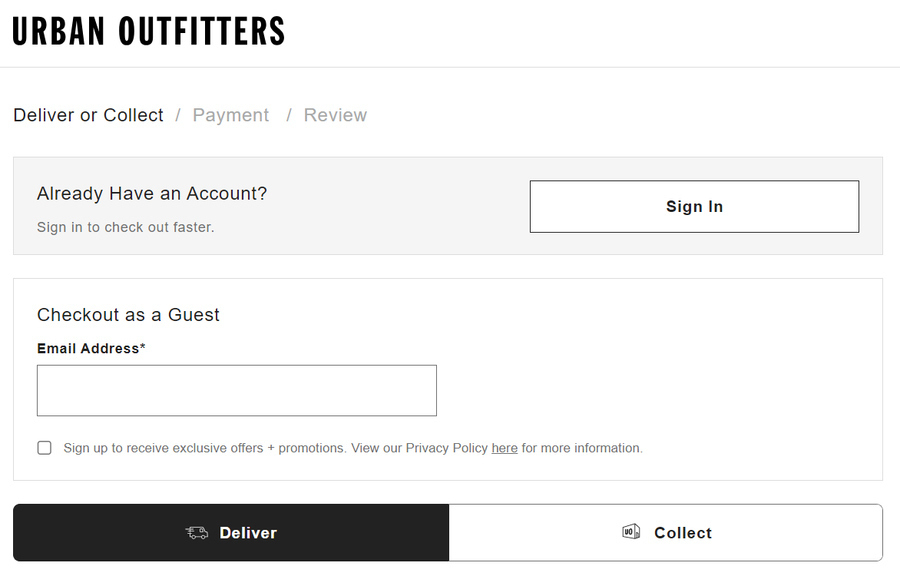
2. Provide Multiple Payment Options
Every customer has their preferred payment method, and offering multiple options caters to their diverse needs.
Providing multiple options like paying with credit cards, debit cards, digital wallets (like PayPal, Apple Pay, Google Pay) and even alternative methods like bank transfers or installment plans gives your customers flexibility and convenience during the checkout process.
This will increase the likelihood of securing the sale, as your customers can use the method they trust and feel most comfortable with.
3. Be Transparent About Your Costs
Transparency is crucial in building trust with your customers. Clearly displaying the total price, including taxes, shipping fees and additional charges upfront prevents any last-minute surprises during checkout.
Hidden costs can lead to customer frustration and cart abandonment. By being upfront about the costs, you establish a sense of reliability and honesty, fostering a positive shopping experience.
4. Optimize Your Checkout Page Design For Responsiveness
Mobile shopping is on the rise and optimizing your checkout process for mobile devices is essential.
In 2023, smartphones took the lead in retail site traffic worldwide, accounting for approximately 74% of all visits to online stores and contributing to 63% of total online purchases made during that period.
Make sure your checkout page design is responsive and works seamlessly on smaller screens. To make your checkout page mobile-friendly:
- Design larger and more prominent buttons than traditional desktop buttons to accommodate touch inputs and ensure easy tapping.
- Provide ample spacing around the buttons to prevent accidental taps and ensure your customers can select the desired option.
- Ensure that buttons have a sufficient touch target area, making it easier for your customers to interact with them.
5. Incorporate Trust Signs
Displaying trust badges, security icons or SSL certificates in your checkout page design helps reassure your customers that their sensitive payment information is safe and encrypted.
Trust signs from recognized security providers signify a secure environment for payment processing, instill confidence and reduce anxieties related to online transactions.
They can include icons of VeriSign, McAfee, SSL certificates, etc.
6. Prioritize Your Customers’ Needs
A user-friendly checkout page design aligns with the customer’s expectations and follows standard design conventions.
- Use clear and descriptive labels for form fields: For instance, if there is a field to enter the email address, the descriptive label would be “Email Address,” clearly indicating that the customer should input their email.
- Arrange your labels logically: Logical arrangement involves grouping related elements together and placing them in a sequence that aligns with the natural flow of user interaction. For instance, if a customer needs to enter their name and address during checkout, the fields should be placed in a sequential order, with the name field before the address field.
Sticking to a simple and intuitive layout ensures that your customers can easily navigate through the checkout process without confusion or frustration.
7. Include A Progress Indicator
Including a progress indicator, such as a step-by-step guide or progress bar, informs your customers about their position in the checkout process.
This visual cue creates a sense of direction and helps customers understand how many more steps they need to complete to finish their purchase.
It also reduces the perceived complexity of the checkout process and encourages customers to continue until the final step.
8. Remove Distractions
Keep your checkout page design focused on the purchase process by eliminating unnecessary distractions.
Avoid displaying ads, unrelated links or promotional pop-ups that may divert customers’ attention away from completing their transaction.
A clutter-free checkout page design ensures that your customers stay focused on the task at hand, which ultimately increases the chance for successful conversion.
Take a look at Peloton’s stripped back checkout page design for inspiration:
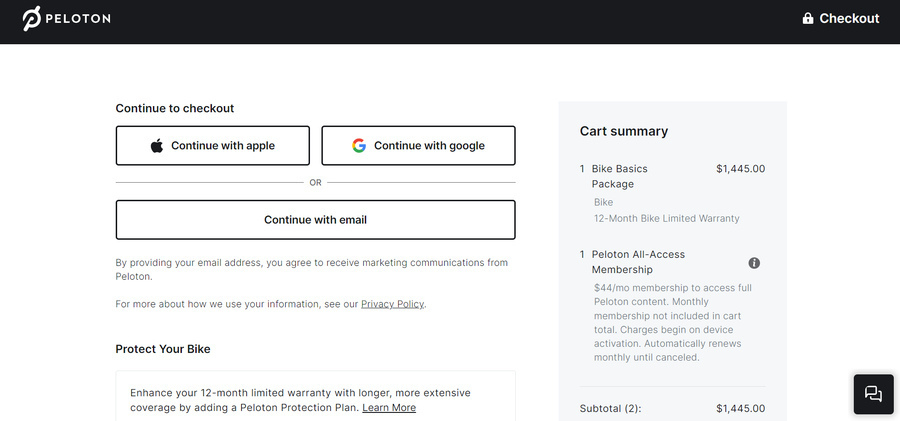
9. Add Data Validation & Notification
Implement data validation to check for errors in the information customers enter during checkout.
If customers input incorrect data, such as an invalid email address or credit card number, provide clear and helpful error messages that guide them in correcting the mistakes.
On the other hand, once the order is successfully placed, display a notification confirming the purchase.
This action reassures customers that they have completed their transaction and removes any uncertainty.
10. Send A Purchase Confirmation Email
Send a follow-up email to your registered customers after they complete a purchase on your eCommerce website. Purchase confirmation of emails serve several important purposes:
- They confirm the details of the customer’s order and provide them with a purchase summary.
- They are a great opportunity to express gratitude to your customer for choosing to shop in your e-store. A simple thank-you message can go a long way in making your customers feel appreciated and valued.
- They can provide updates on the order status. They can include information about when the order is expected to be shipped, tracking details and estimated delivery dates.
- They can include promotional offers or discounts to encourage your customers to make repeat purchases in the future.
- They are also useful for gathering feedback from customers about their shopping experience and using the information gathered to improve the overall customer experience.
10 Best Checkout Page Design Examples
We’ve rounded up 10 of the best checkout page design examples – including some from our very own Digital Silk design kitchen!
Check out our list below for inspiration and find out why these examples made our list of the best.
1. Rollink
Rollink is an eCommerce brand that offers collapsible suitcases. This example is pulled from our own Digital Silk portfolio!
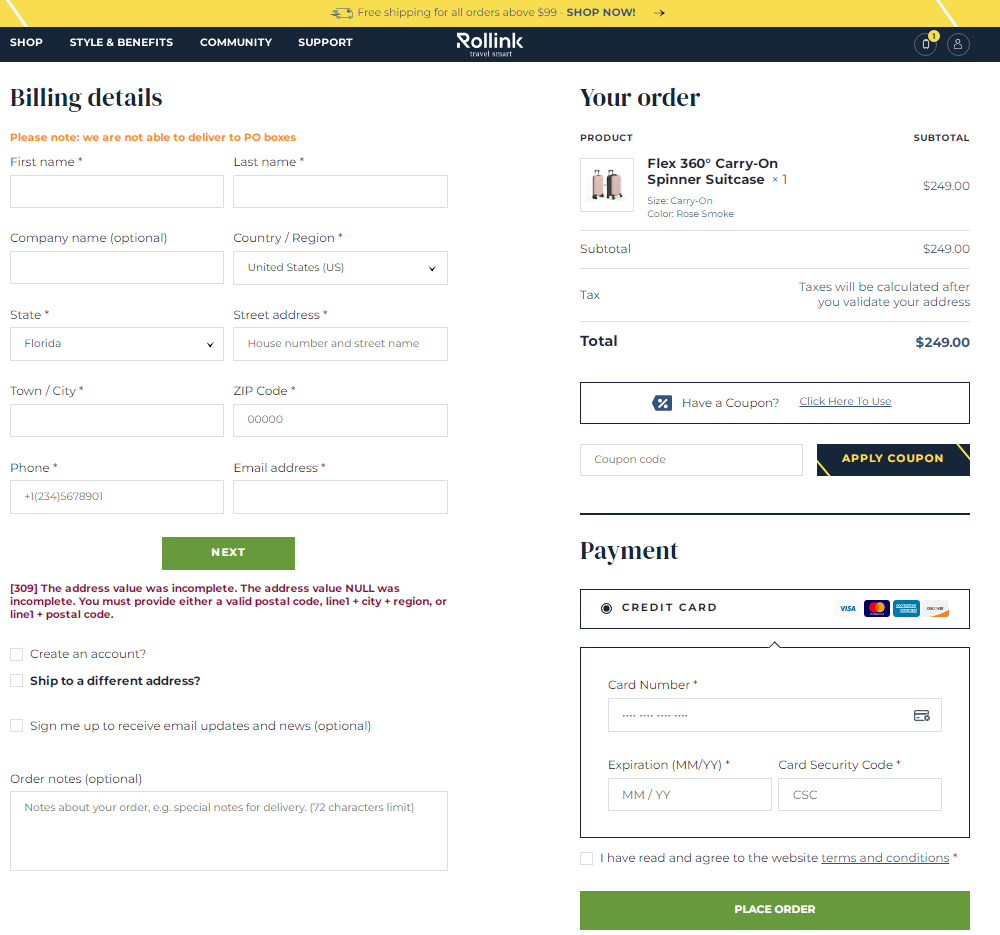
Rollink’s checkout page includes a coupon code field, cart overview, multiple payment options and a prominent “Place Order” CTA. Rollink’s checkout form comes with marked mandatory fields, visual feedback and an explanation for the incorrect information input.
This Digital Silk solution offers a user-centric design with key features like a comprehensive cart overview, diverse payment options and a prominent CTA, all while offering an intuitive interface with visual feedback and guidance for ensuring accurate information input.
2. Etsy
Etsy is a global marketplace for individual sellers and entrepreneurs. Their simple checkout process is one of the best checkout page examples for easy-to-follow navigation.
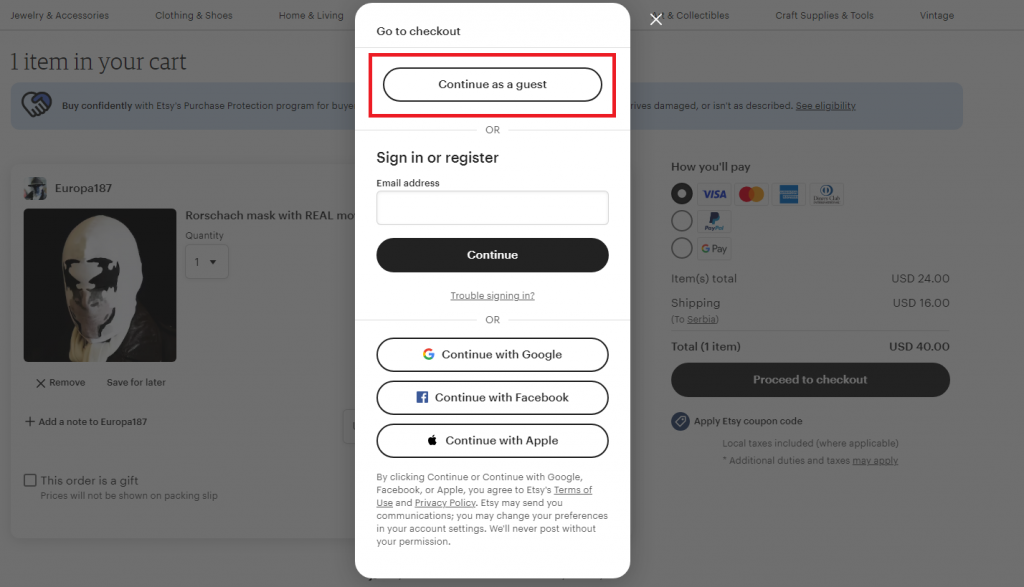
After adding your desired product/products to the cart and clicking on the ‘proceed to checkout’ button, you are presented with various sign-up/registry choices, including an option to sign up as a guest.
Once you go past this pop-up either as a guest or a member, you will be presented with a single-page order form.
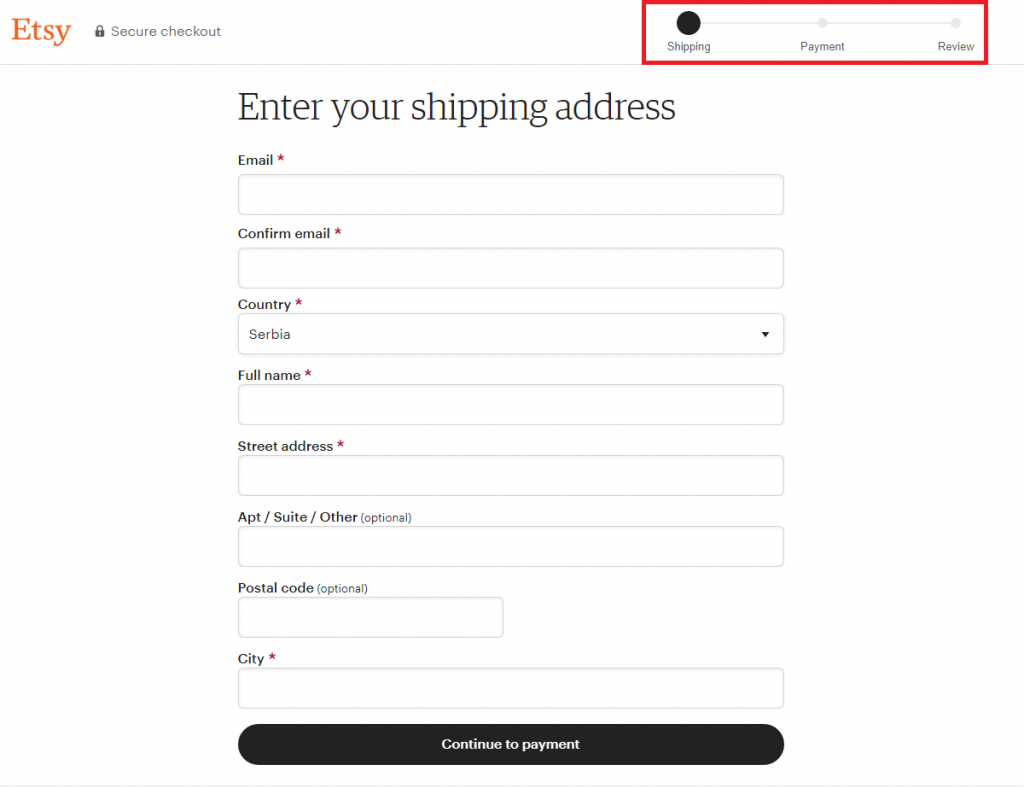
Etsy’s checkout page design also includes a progress indicator at the top right corner, where you can see how many steps away you are from completing your order.
Etsy’s checkout page embodies numerous best practices, with its standout quality being a dedication to simplicity.
3. Sigma Beauty
Sigma Beauty is a well-known beauty brand that specializes in creating and selling high-quality makeup products, beauty tools and accessories. This brand sets a remarkable standard with its straightforward and user-friendly checkout page design.
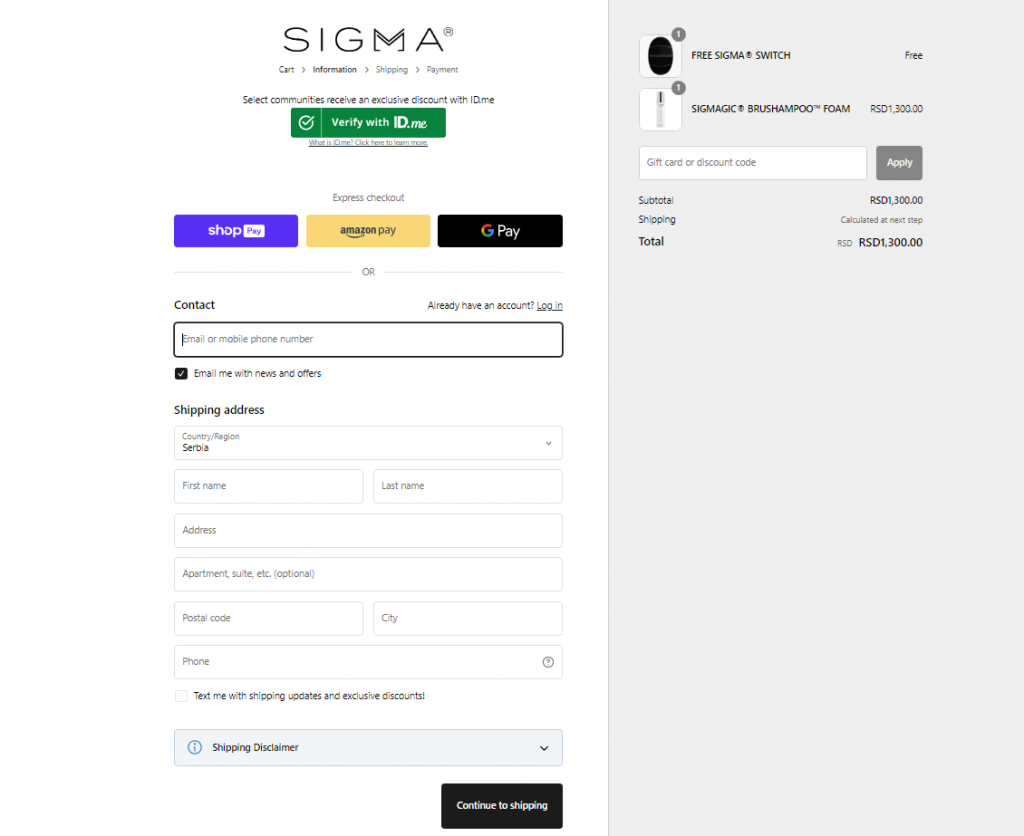
When you reach the checkout phase, you encounter just two easy steps: delivery and payment.
The Sigma checkout page design offers multiple shipping options, empowering their customers to decide when their orders will be delivered and how much they want to spend on shipping fees.
Additionally, Sigma provides a convenient feature that allows you to save your checkout items for future purchases.
This means you can return to the website later on and quickly find your desired items, ready to pick up where you left off.
With its streamlined two-step process, versatile shipping choices and the added convenience of saving items for future purchases, Sigma’s checkout experience showcases a commitment to easy, seamless transactions.
4. Casper
Casper is a well-known brand for sleep essentials such as mattresses and bed sheets.
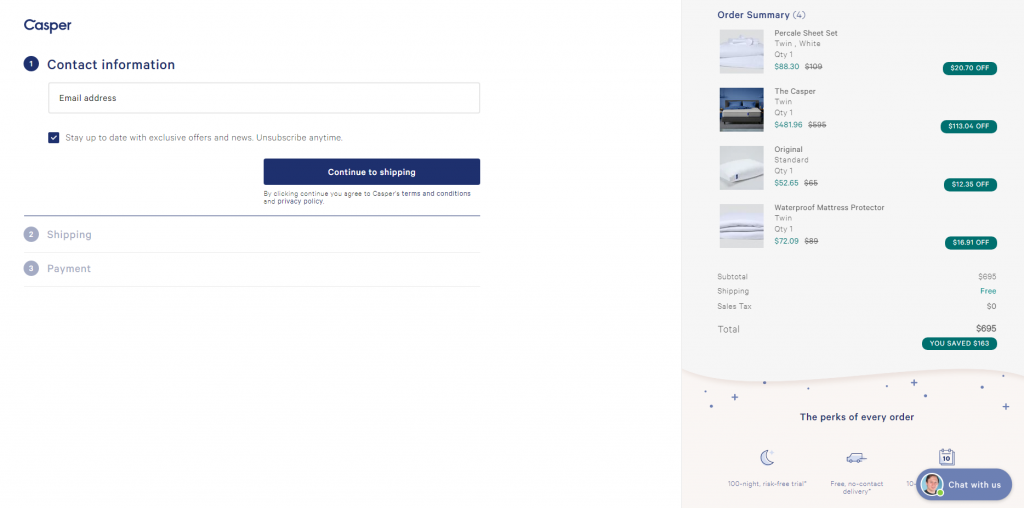
Their checkout page design stands out with its clean layout that efficiently provides all necessary information for completing a purchase.
The Order Summary is thoughtfully placed to the side, offering a clear breakdown of costs and a free refund guarantee.
What truly sets Casper apart is their Chatbot feature.
By offering customers the opportunity to communicate with representatives right on the checkout page, Casper ensures that all questions and concerns are addressed, providing consumers with the peace of mind they need to complete their order.
5. Babies R Us
Babies R Us is a trusted retail brand that caters to all things baby, providing high-quality products, valuable information and a supportive community for families of diverse backgrounds. This design is another example from our Digital Silk portfolio!
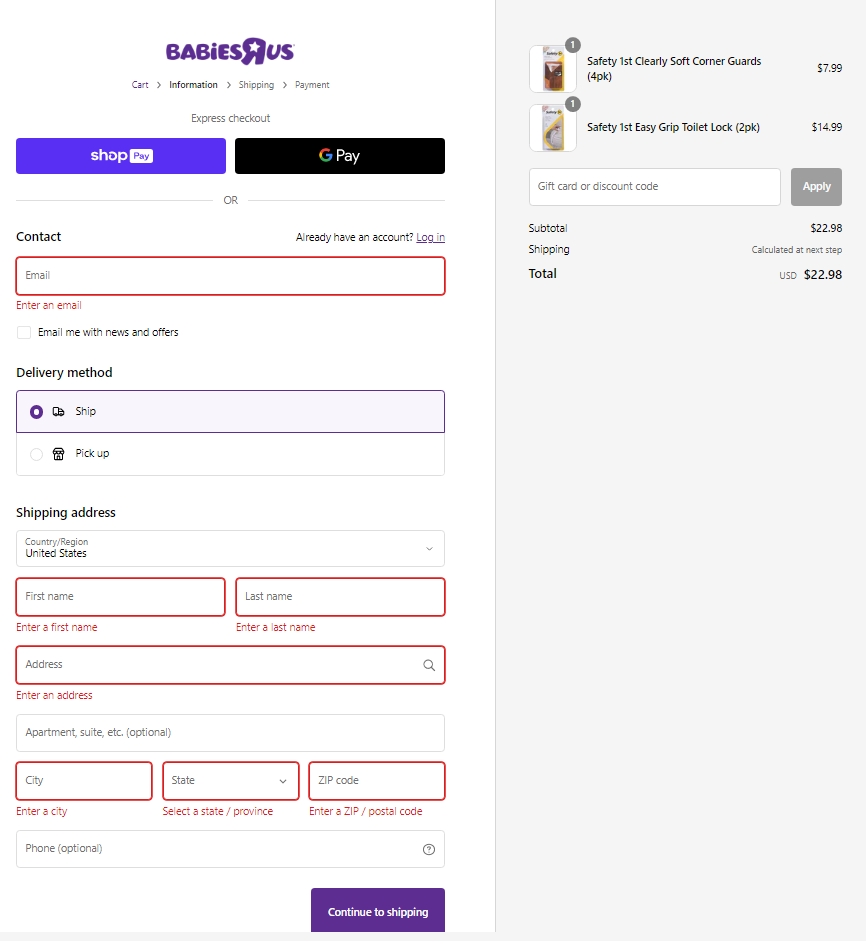
This design follows best practices for checkout page design, but what stands out specifically is a helpful visual cue that indicates any missed mandatory fields in the checkout form.
These important fields will turn red, catching your attention and ensuring you enter all the required information accurately.
While the shipping fee may not be visible right away, you will be promptly informed that the shipping details will be revealed to you after completing the next step.
This transparent approach empowers customers to make informed decisions during the checkout process and fosters a sense of trust along the way.
6. Samsung
Samsung is a prominent technology brand that needs no introduction.
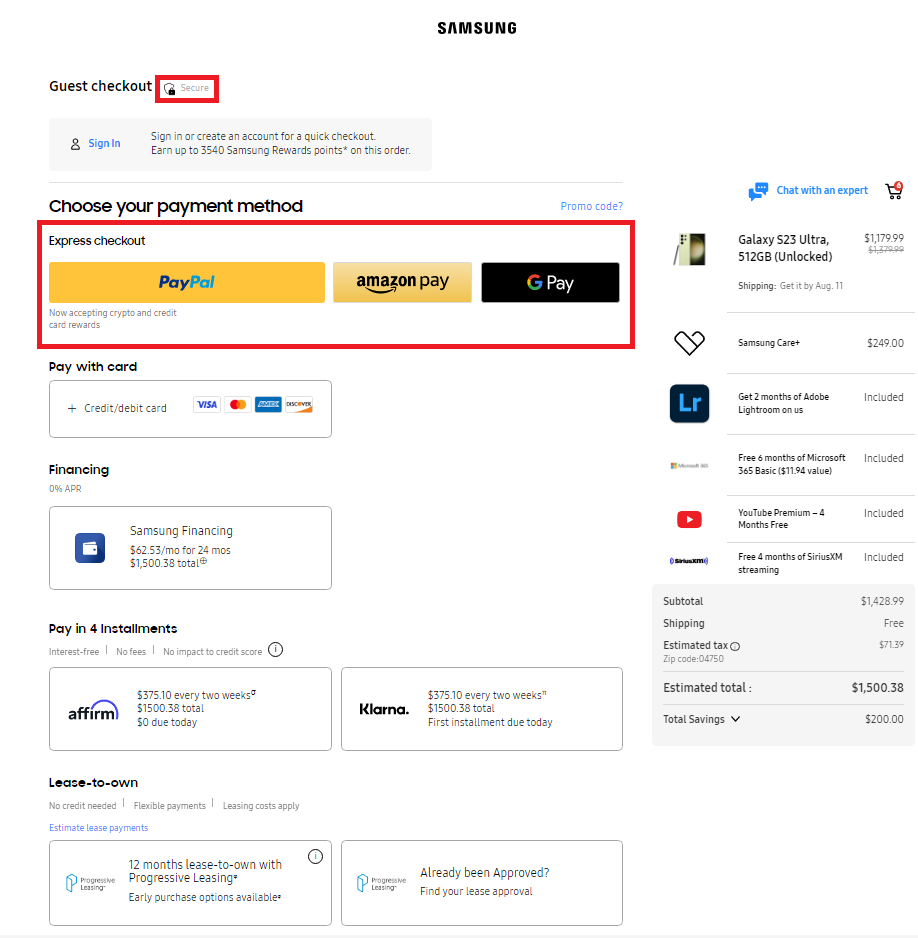
Their checkout page design follows the best design practices by including various payment options and showcasing trust seals prominently.
Samsung’s checkout page also includes a field for promo codes, four installment options allowing their customers to choose a payment plan that suits their preferences
Samsung also added a feature that allows you to modify the shopping cart as you please, emphasizing customer empowerment in enabling shoppers to refine their selections effortlessly without navigating back to the cart page.
By incorporating a myriad of payment options, prominently displayed trust seals and offering the convenience of real-time cart modifications, Samsung’s checkout page design seamlessly combines user empowerment and practicality.
7. Stündenglass
Stündenglass is an eCommerce platform that offers award-winning Glass Gravity Infusers, powered by pure fluid physics for industries such as culinary, mixology, hookah and aromatherapy – another example from our award-winning designers at Digital Silk.
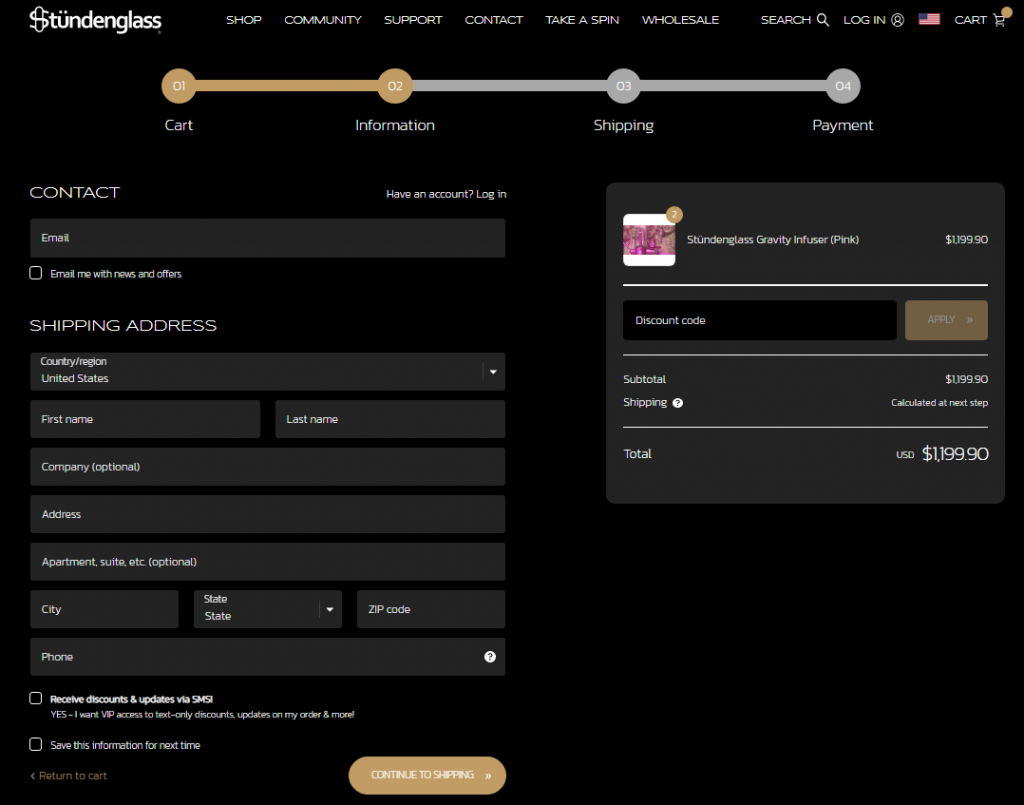
Our solution for the Stündenglass’ checkout page design includes a visually appealing dark-themed layout and a straightforward checkout path.
In line with the best practices for checkout page design, the Stündenglass checkout page features progress tracking and a prominently displayed discount code field, all seamlessly integrated into a visually engaging dark-themed layout.
8. Lego
Lego is a company known worldwide for their exceptional interlocking plastic brick toys. Their checkout page design is very simple and straightforward.
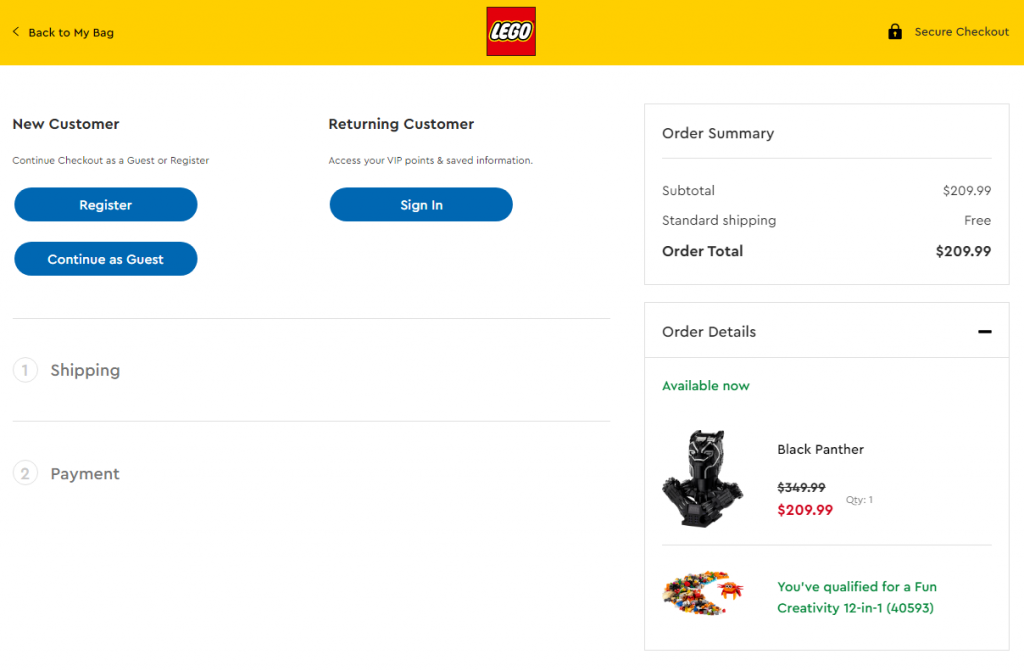
Once you click on the “Checkout Securely” button, you are presented with a two-step checkout process for shipping and payment, thus minimizing barriers in the purchasing journey.
Lego also offers a guest checkout option, eliminating potential friction points and enabling a hassle-free checkout experience.
Lego’s unwavering commitment to user-centered design is evident in its streamlined two-step checkout process and the option for guest purchases, collectively crafting a seamless checkout experience.
9. Lugz
Lugz is a footwear brand that offers a stylish collection of boots, sneakers and casual shoes that embody timeless design. Our Digital Silk designers delivered a custom website for the brand, complete with an optimized checkout page design.
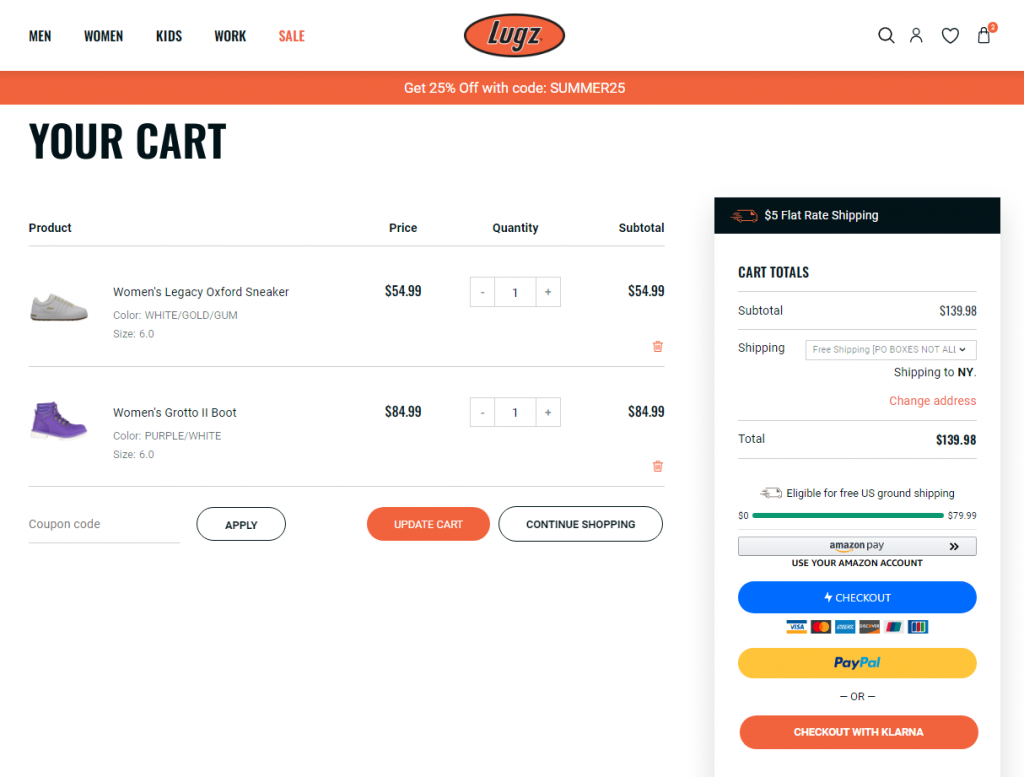
In our commitment to implementing best practices, we ensured Lugz’s checkout page stands out with a feature that includes a fast checkout option, highlighted by a blue button adorned with a lightning symbol.
By clicking on it, you open a pop-up checkout form with only the essential fields required for completing your order.
Unlike other choices that would guide you through a multi-step checkout process, this option streamlines the experience, allowing customers to swiftly proceed with their purchase.
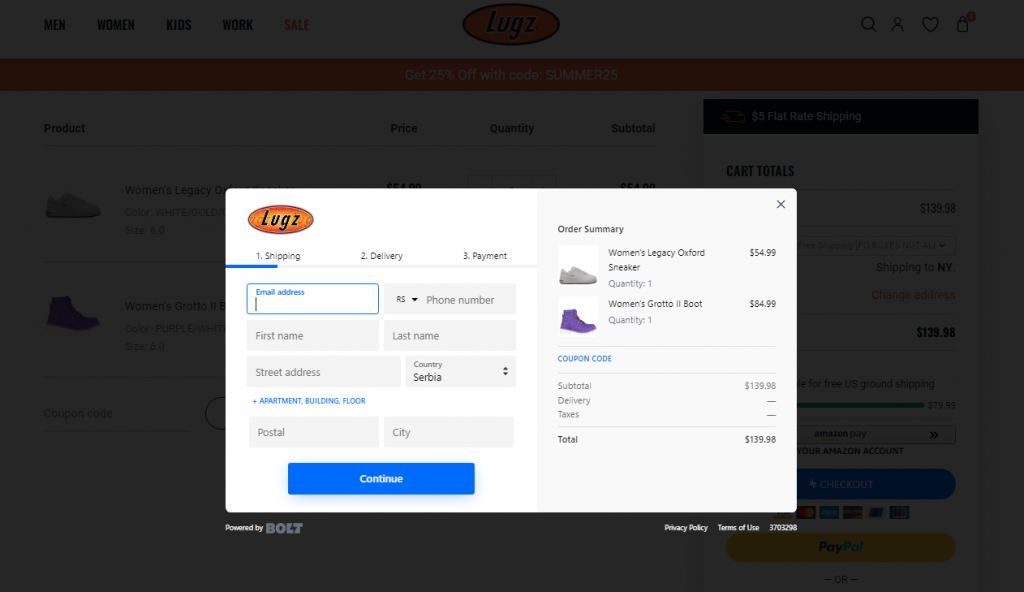
By incorporating the user-friendly fast checkout option and its streamlined approach, we helped Lugz optimize the buyer’s journey, enhancing convenience and expediting the ordering process for a seamless customer experience.
10. G Pen
Pioneering vape technology with the first-ever tank system for essential fluids and aromatherapy, G Pen offers high-powered vapes at an accessible price point.
Our Digital Silk team worked on this one as well – take a look at our checkout design solution for G Pen’s mobile site.
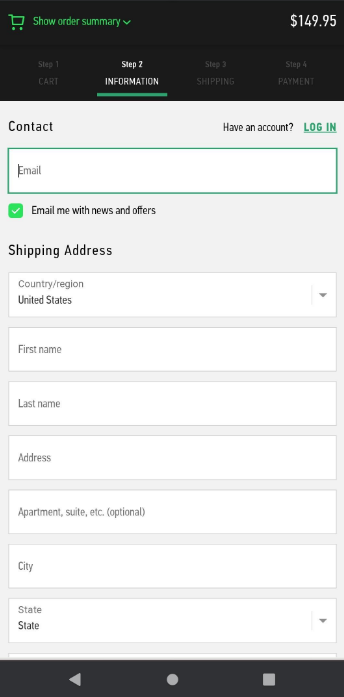
Our mobile checkout page design for G Pen includes a simple form, progress tracking and sizable input fields that are easily accessible on smaller screens.
If you encounter any issues during checkout, you can connect with the brand’s customer support team via live chat.
How To Evaluate Your Checkout Page Design
Evaluating your checkout page design ensures a smooth and seamless shopping experience for your customers. Here are some key tests to perform:
- Functional testing: Test the payment process to ensure accurate order handling, calculations as well as tax calculations.
- Cross-browser testing: Verify that the checkout flow works as intended across different browsers and operating systems to ensure compatibility for all users. For this purpose, you can use tools like Browser Stack.
- Integration testing: Test the integration of your website with the selected payment gateway to ensure a successful transaction flow.
- Performance testing: Evaluate the website’s performance during payment processing to ensure it can handle multiple transactions simultaneously without crashing.
- Security testing: Verify that sensitive data, like credit card numbers and CVV, are transmitted securely through encryption during transactions.
- Geolocation testing: Perform geolocation testing to assess the checkout flow from different regions, checking for language and currency changes and proper tax calculations.
You should also keep track of the following checkout page’s key performance indicators (KPIs):
- Cart abandonment: The percentage of visitors who left their online shopping carts without completing a purchase compared to the total number of sessions with active shopping carts.
- Checkout engagement: The level of customer interaction and activity during the checkout process. It focuses on tracking the number of site visits or sessions where visitors added products to their online shopping carts and then initiated the checkout steps.
- Checkout conversion: The success rate of visitors who completed their payments compared to those who started the checkout process after adding at least one product to their carts.
- Accelerated checkout: The count of all site visits where visitors added products to their carts and opted for digital payment options to bypass the conventional multi-step checkout process.
- Mobile abandonment gap: The difference in checkout funnel effectiveness between mobile and desktop devices.
eCommerce Design At Digital Silk
Digital Silk is a full-service agency with an expert in-house team of top web designers, developers, branding and marketing specialists, copywriters and more.
At Digital Silk, we create custom eCommerce solutions that prioritize an engaging user experience and drive conversions.
Through innovative design, advanced technology and data-driven strategies, we drive measurable results for our eCommerce clients of all sizes.
We take the time to fully understand your industry’s landscape, ensuring that every aspect of your online store, including the checkout page design, search functionality, security and product pages, meets the best UX standards.
If you’re ready to kickstart your checkout page design and boost your online store’s conversion rates, request a quote today and let our experts craft a unique proposal for your brand.
"*" indicates required fields

